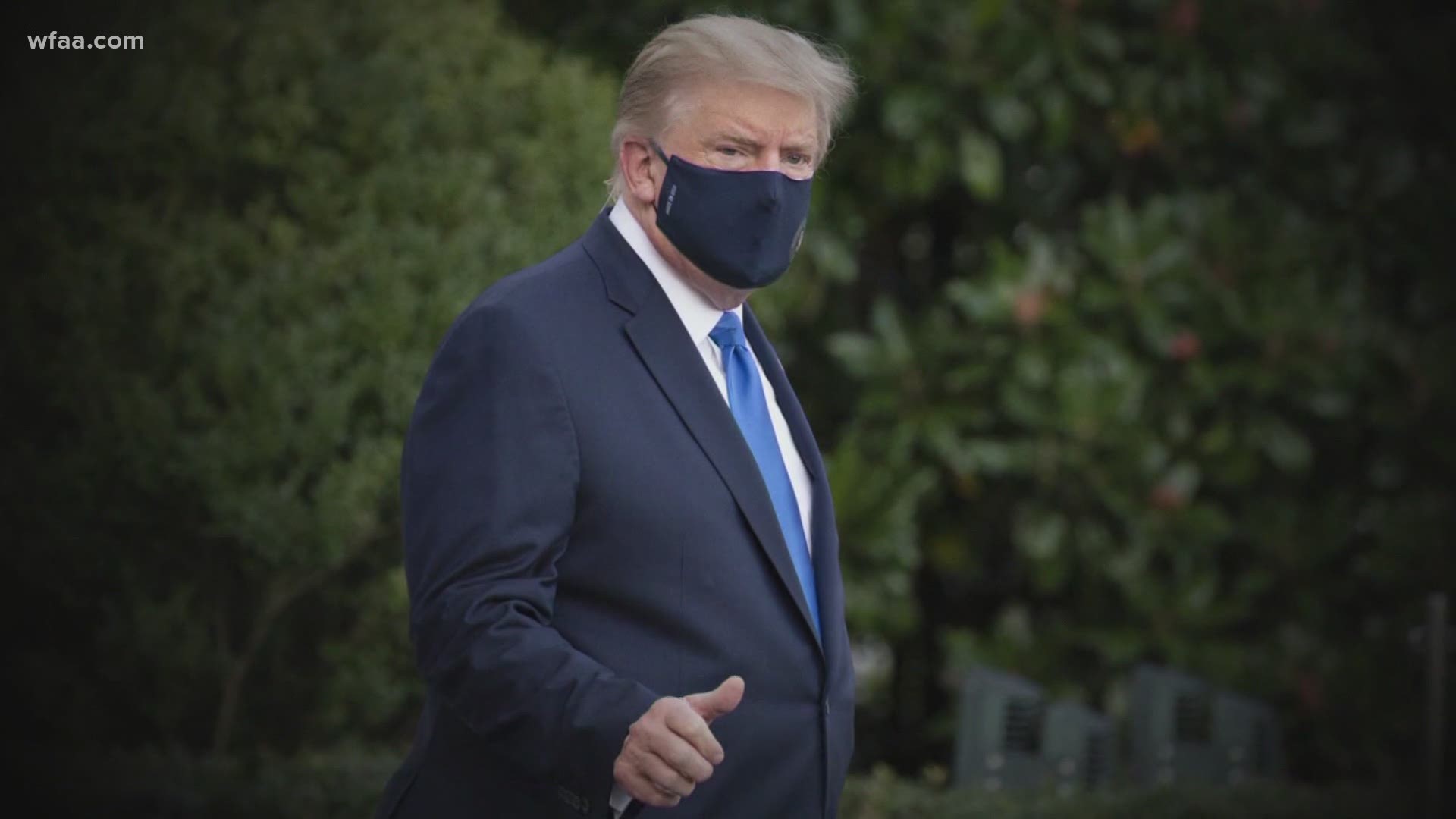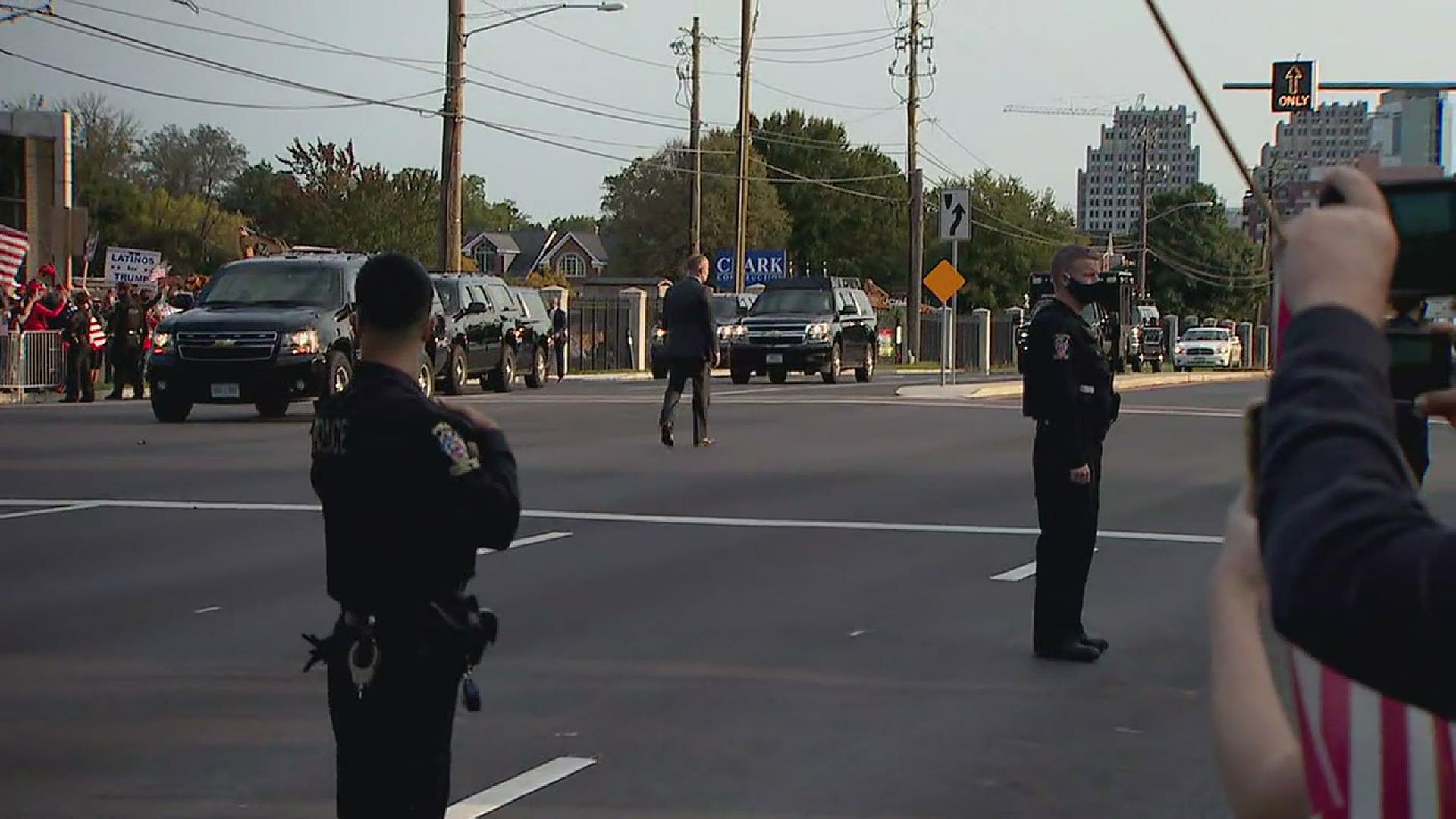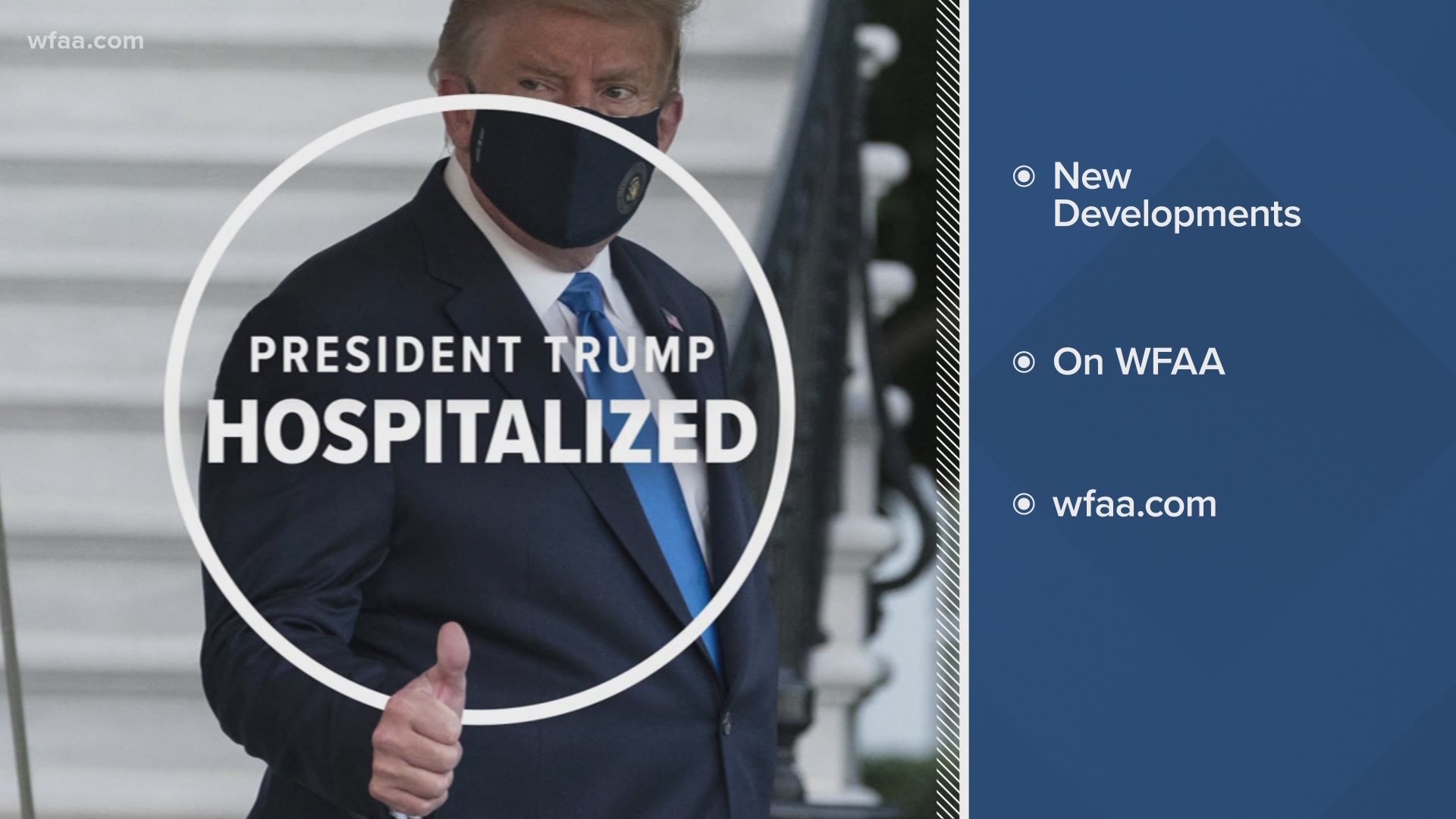The world is watching Walter Reed Medical Center in Maryland where a team of doctors is caring for President Donald Trump after he tested positive for COVID-19.
“The President has continued to improve,” said Dr. Sean Conley, the President’s physician, at a news conference on Sunday.
Conley said the president was no longer experiencing shortness of breath.
The Dallas County Medical Society president, Dr. Mark Casanova, said he's closely listening to what Trump's medical team is saying about his oxygen levels.
“If we start to see oxygen saturation dip into the low 90s and certainly below, that’s a clear indication that it’s taking a toll on our system,” Casanova said. “Now ironically, not everybody will feel those low oxygen levels.”
Conley said Trump's oxygen saturation level fell into the low 90s but wouldn't say if the level dropped below that measurement.
Crystal Howell, an infectious disease pharmacist at the UNT Health Science, said there's "so much uncertainty" with the disease.
“This is a really good example of what a lot of people all over the country are experiencing,” Howell said of the president's coronavirus experience.
Howell says the president taking the anti-viral drug Remdesivir isn’t surprising. Remdesivir helps reduce the time of the serious impact of the virus.
But adding the steroid dexamethasone, though, may mean the president’s struggling because it’s usually designed for those with the low oxygen levels.
“I would say I’m a little concerned. He does have multiple risk factors,” Howell said. “Maybe he falls into that category where there seems to be some benefit because if he didn’t receive any oxygen, then the data does not support that it’ll help him at all.”
The side effects of the steroid include jitters and mood swings.
Trump has needed oxygen twice, Conley said Sunday, a day after not discussing the president's oxygen needs.
“I was trying to reflect the upbeat attitude that the president, that his team, through his course of illness has had,” Conley said on Sunday.
Trump's medical team wouldn’t answer questions about scans of the president’s lungs. Such scans would show if there are signs of pneumonia, Casanova said.
“Right there is one more piece of information that says the individual who had those findings is definitely at a minimum in a moderate risk category,” Casanova said.
Trump’s team said the president could begin the discharge process Monday if his condition improves.
Medical experts that seven to 10 days after contracting COVID-19 are often when a person's condition improves or gets worse.
Casanova said the president would still receive high-level medical care at the White House if he is discharged from the hospital.
“Nothing happens quickly in medicine unless it’s in the wrong direction, so as long as we’re not hearing about changes constantly, that’s usually a good sign,” said Howell, the infectious disease pharmacist.
Both Howell and Casanova say the president’s stay in the hospital is a reminder of the importance of masks and distancing.
“COVID-19 doesn’t know boundaries,” Casanova said. “It doesn’t care who you are, your status in life, what political affiliation you have.”



